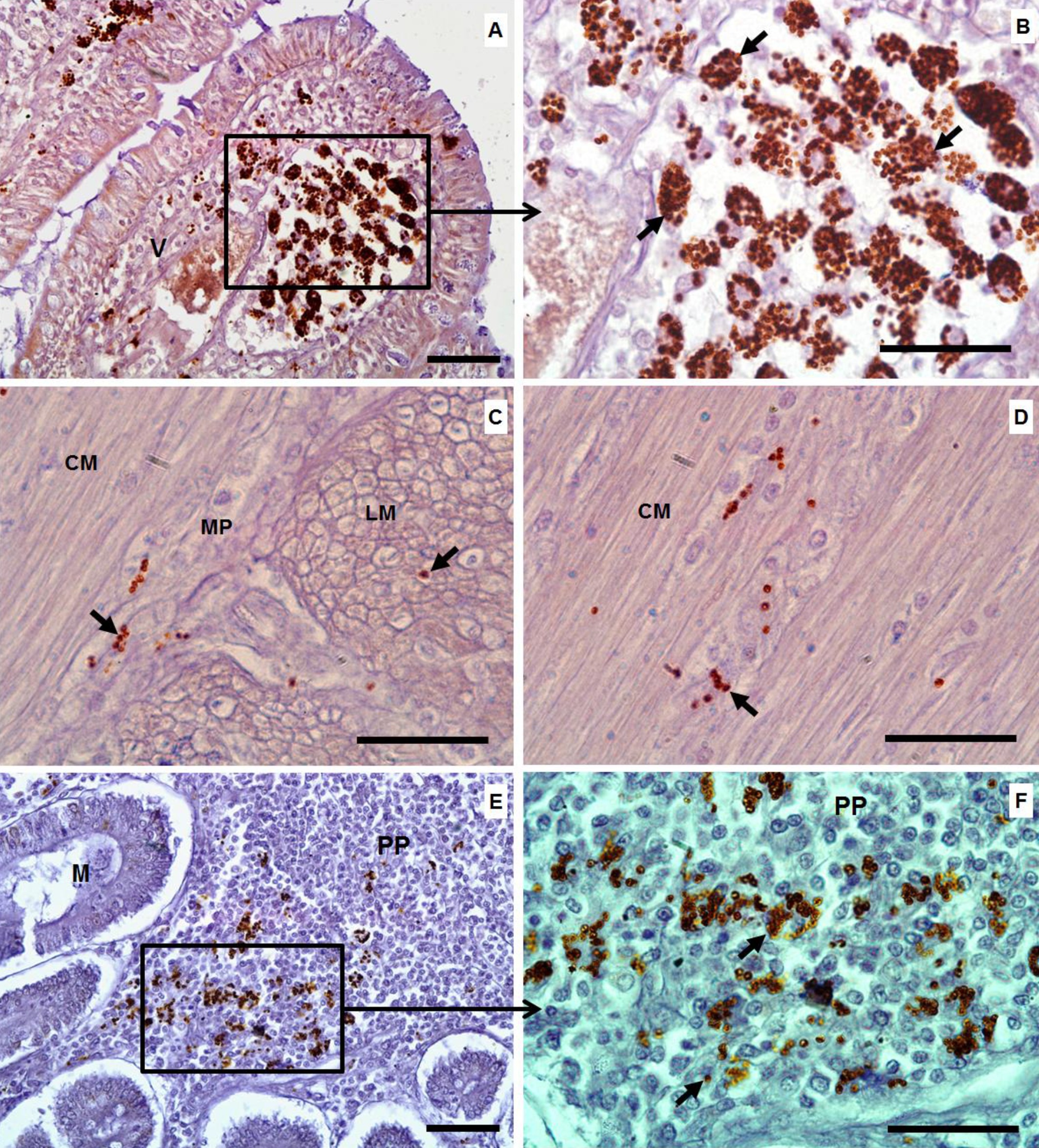Abstract
The aim of this work was a correlation study and histopathological description of alterations associated with the presence of Leishmania infantumamastigote in the intestinal wall of dogs infected with canine visceral leishmaniasis (CVL). Three groups were used: G1 (n = 8), comprising naturally infected dogs with CVL with amastigotes of L. infantum in the small and large intestines; G2 (n = 9), infected dogs with CVL, without intestinal amastigotes; and G3 (n = 3), uninfected dogs. Histochemistry and immunohistochemistry methods were used for histopathology and amastigotes identification. 47.1% (8/17) of dogs from G1 group had amastigotes in the mucosa, submucosa and muscle layers of the small and large intestines and it was observed a prominent inflammatory reaction characterized by chronic infiltration of mononuclear cells: macrophages, lymphocytes and plasma cells. Comparison between the groups showed only a significant difference in relation to mucosal microscopic structural alterations in dogs from G1 in relation to G2 and G3. Parasite burden showed significant correlations with the microscopic alterations and clinical status of dogs in G1. By the conclusion, the inflammatory reactions caused by the parasites in the intestines might have contributed towards alterations in digestive processes, worsening the dogs’ clinical status of CVL.
Keywords:
Dog; histology; immunohistochemistry; intestine; leishmaniasis; amastigotes

 Thumbnail
Thumbnail
 Thumbnail
Thumbnail
 Thumbnail
Thumbnail


